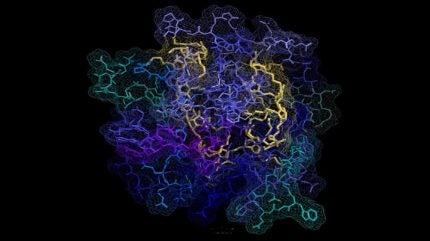
Researchers from the US’s Northwestern and Case Western Reserve universities have developed the first therapeutic that leverages polymers to treat Huntington’s disease, an incurable neurological condition. It uses peptide-brush polymers to shield proteins from harmful binding. The approach has succeeded in mouse studies, where it reversed symptoms and no adverse events were confirmed.
The gold standard of business intelligence. While further testing is required, the researchers envision administering the treatment as a once-weekly injection to delay the onset of the disease or alleviate symptoms in those carrying the genetic mutation. The study was co-led by Nathan Gianneschi, Northwestern’s Weinberg College of Arts and Sciences professor of chemistry and member of the International Institute of Nanotechnology, and Xin Qi, the Jeanette M and Joseph S Silber professor of brain sciences and co-director of the Center for Mitochondrial Research and Therapeutics, at Case Western Reserve University.
It is based upon earlier research from Case Western Reserve, where in 2026 Xin Qi and a team identified a valosin-containing protein that binds abnormally to the mutant Huntington protein, leading to cellular aggregates. These aggregates disrupt the function of mitochondria, crucial for cellular energy production. Access the most comprehensive Company Profiles on the market, powered by GlobalData.
Save hours of research. Gain competitive edge. Your download email will arrive shortly We are confident about the unique quality of our Company Profiles.
However, we want you to make the most beneficial decision for your business, so we offer a free sample that you can download by submitting the below form The same team discovered a peptide that could disrupt the harmful protein interaction. However, peptides alone are limited by their short lifespan and difficulty in crossing the blood-brain barrier. To address these challenges, Gianneschi’s team engineered a biocompatible polymer to display multiple copies of the active peptide.
The new structure, resembling a polymer backbone with peptide branches, not only protects the peptides from degradation but also facilitates their entry into cells. Gianneschi stated: “There is no real treatment for stopping or reversing the disease, and there is no cure. These patients really need help.
So we started thinking about a new way to address this disease. “The misfolded proteins interact and aggregate. We’ve developed a polymer that can fight those interactions.
” When injected into a mouse model of Huntington’s disease, the polymer remained in the body significantly longer than traditional peptides and successfully prevented mitochondrial fragmentation, preserving brain cell health. The mice treated with the polymer lived longer and exhibited more normal behaviour. Gianneschi plans to further optimise the polymer and investigate its potential application in other neurodegenerative conditions.
.














